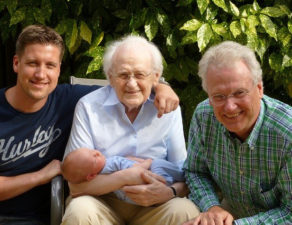
Over the years, I have found that one of the biggest obstacles preventing clients from pulling the trigger on a Medicaid Trust is the perception that all control is lost over the assets being transferred to the trust. While it is true that legal title to the assets must be transferred to the trustee, a well drafted trust can provide several mechanisms allowing the creator of the trust to maintain a certain degree of control.
The following are some techniques I use in Medicaid Trusts to calm your fears of losing control.
Power to Remove and Replace a Trustee
Every trust has a trustee. The problem may lie in who you choose to be the initial trustee and, if circumstances were to change, how to replace that trustee. Even the closest and most trusted of family members may face their own difficult circumstances that may not make them the most ideal trustee years after their initial appointment.
By way of example, assume that you have a trust naming your only child as trustee. By some misfortune, you and your child become estranged. You have grown worrisome trusting that child to act as trustee. Since the trusts I draft give you the power to remove and replace the trustee, you can easily appoint another family member or close friend as the new trustee.
Power to Change Beneficiaries
Just as every trust needs a trustee, so too does every trust need a beneficiary. In most cases, children or other family members are the beneficiaries of a trust upon termination of the trust. However, once again, circumstances may arise that may warrant a change in beneficiaries.
For example, assume that you have two sons, each of whom are named as beneficiaries. Unfortunately, one of your sons had just been served divorce papers. You fear that if you die and the trust terminates, his wife might be entitled to a portion of his inheritance. The Medicaid Trusts that I prepare include a limited power to change the beneficiaries among certain classes of individuals, such as your other children, thus eliminating your fears.
Power of the Trustee to Distribute Principal and Income
Most clients will fund a Medicaid Trust with their home and some of their other non-retirement assets. We usually recommend that the non-retirement assets earmarked for the trust be assets that the client never intends to use. However, there may be unforeseen circumstances where the money of the trust is needed such as for a large expenditure, such as for uncovered medical costs.
Although you do not have access to the principal of the trust, our trust provides that the it can make distributions of principal to your children or any other defined class of individuals so that the money can come out of the trust. Once the distribution is made from the trust, the children can use those assets for your benefit.
Revoking the Trust
Ultimately, under New York Law, you can actually revoke an irrevocable trust with the consent of the trust beneficiaries.
Notwithstanding client’s fears of losing control, very rarely do you see clients revoking the trusts for this reason. However, you should know that this is an option so you know that ultimately, this irrevocable arrangement can be reversed.
All of the above mechanisms are sophisticated and not found in boilerplate documents. It is important to work with a seasoned elder law attorney with proper drafting experience. Please contact us at 914-245-2440 or by e-mail.










